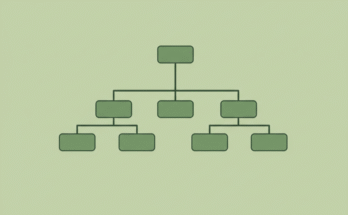If you’ve spent any time exploring the world of blockchain and cryptocurrencies, you’ve probably come across the term “fork“. While it might sound like something you’d find in your kitchen drawer, in the blockchain space, a fork refers to an important event that can significantly shape the future of a cryptocurrency or blockchain network.
But what exactly is a blockchain fork? And how do hard forks differ from soft forks? Don’t worry, by the end of this post, you’ll have a clear understanding of these concepts, explained in a simple and friendly way.

What Is a Blockchain Fork?
In the simplest terms, a blockchain fork happens when the code of a blockchain network splits into two different paths. Think of it like a road that suddenly branches into two distinct directions.
This split happens because blockchains are decentralized systems powered by software. When developers make changes to the rules or code of the blockchain, it can result in a fork. Sometimes, everyone agrees to follow the new rules, and other times, disagreements lead to competing versions of the blockchain.
→ Forks can occur for several reasons, such as:
- Upgrading the network to improve its functionality or security.
- Fixing bugs or vulnerabilities in the code.
- Disagreements among community members about how the blockchain should operate.
Hard Fork vs. Soft Fork, What’s the Difference?
Now that we know what a fork is, let’s dive into the two main types: hard forks and soft forks. While they both involve changes to the blockchain, they’re quite different in how they work and their impact on the network.
1. [Hard Fork] A Permanent Split
A hard fork is like a dramatic family feud, two sides go their separate ways and never look back. It happens when the changes made to the blockchain are so significant that they’re incompatible with the old version of the software.
In a hard fork, some participants (nodes) stick with the old rules, while others adopt the new rules. This results in two separate blockchains that exist independently. Each blockchain has its own set of users, miners, and transactions moving forward.
Key Characteristics of a Hard Fork:
- Incompatibility: Old and new versions cannot communicate with each other.
- Permanent Split: Two distinct blockchains emerge (e.g., Bitcoin vs. Bitcoin Cash).
- Requires Consensus: Users and miners must decide which version to support.
Real-Life Example, Bitcoin Cash
Bitcoin Cash was created in 2017 as a result of a hard fork in the Bitcoin network. The split occurred because some members of the community wanted larger block sizes to allow faster transactions, while others preferred sticking to Bitcoin’s original design. Today, Bitcoin and Bitcoin Cash operate as completely separate cryptocurrencies.
2. [Soft Fork] A Gentle Upgrade
A soft fork is more like a friendly compromise where everyone agrees to follow new rules without splitting apart. It involves backward-compatible changes to the blockchain, meaning that even nodes running the old software can still recognize and interact with the upgraded network.
Soft forks are typically used for minor upgrades or improvements that don’t require creating an entirely new blockchain. As long as most participants adopt the new rules, the network continues to function smoothly without any permanent split.
Key Characteristics of a Soft Fork:
- Backward Compatibility: Old nodes can still interact with upgraded nodes.
- No Split: The blockchain remains unified under one version.
- Requires Majority Support: Most nodes need to agree to enforce the new rules.
Real-Life Example, SegWit (Segregated Witness)
SegWit was implemented as a soft fork on the Bitcoin network in 2017. It introduced changes to how transaction data is stored, improving scalability and reducing transaction fees. Because it was backward-compatible, there was no split in the Bitcoin blockchain, users simply upgraded their software over time.
Why Do Forks Matter?
Forks are more than just technical events. They’re moments that reflect the dynamic nature of blockchain communities. They showcase how decentralized networks adapt and evolve based on user needs and developer innovation.
→ Here are some reasons why forks are important:
- Innovation: Forks allow developers to experiment with new ideas and improve existing systems.
- Choice: Hard forks give users options to choose which version aligns with their values or goals.
- Community Dynamics: Forks reveal how disagreements within communities can lead to change or division.
- Security: Both hard and soft forks can address vulnerabilities and strengthen the network against attacks.
Should You Be Concerned About Forks?
If you’re a casual cryptocurrency user or investor, forks might seem intimidating, but they’re not something to fear! Here’s how forks might affect you:
- For Investors: During a hard fork, you may receive “free coins” on the new blockchain if you held coins on the original chain (e.g., Bitcoin holders received Bitcoin Cash after its hard fork). However, it’s important to research both chains before making investment decisions.
- For Developers or Miners: You’ll need to decide which version of the blockchain to support based on your goals and priorities.
- For Everyday Users: In soft forks, you may not even notice much change, as everything continues working seamlessly behind the scenes.
Conclusion
Blockchain forks are an essential part of how decentralized networks evolve and adapt over time. Whether it’s a hard fork creating an entirely new cryptocurrency or a soft fork upgrading existing functionality, these events highlight the flexibility and creativity within blockchain communities.
Understanding forks helps you appreciate the technical and social dynamics behind your favorite cryptocurrencies and maybe even prepare for exciting changes ahead. So next time you hear someone mention a blockchain fork, you’ll know exactly what they’re talking about and why it matters in this ever-evolving world of crypto technology.


![[Blockchain Beyond Cryptocurrency] The Untapped Potential Across Industries](https://mineatech.com/wp-content/uploads/2025/08/blockchain-beyond-cryptocurrency-the-untapped-potential-across-industries-348x215.png)
![What Is a Blockchain Consensus Algorithm? [Explained Simply]](https://mineatech.com/wp-content/uploads/2025/08/what-is-a-blockchain-consensus-algorithm-explained-simply-348x215.png)